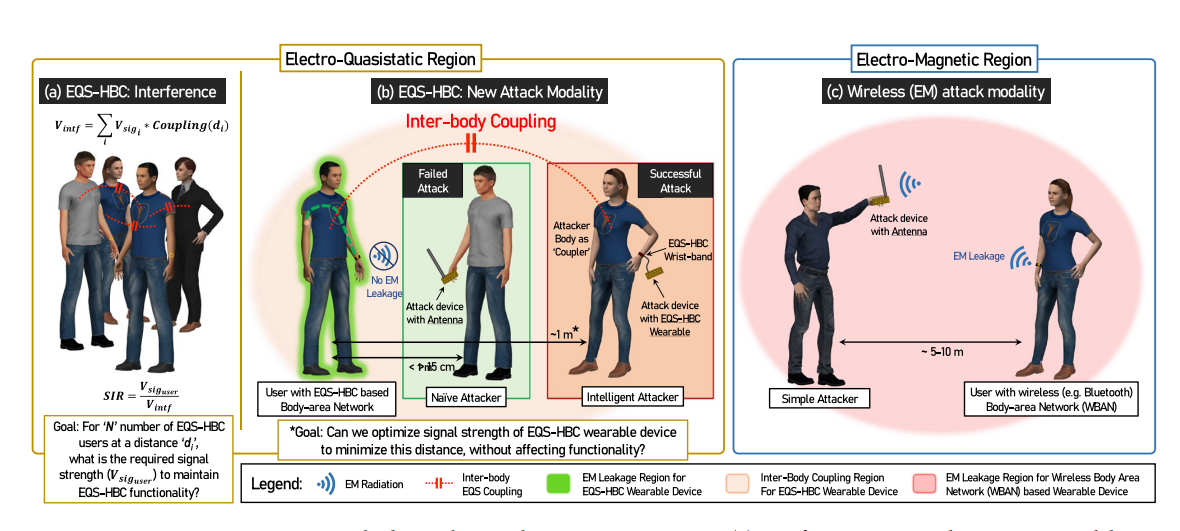EQS-HBC: The Future of Communication and Its Hidden Risks
Summary: This scientific paper investigates Electro-quasistatic Human Body Communication (EQS-HBC), focusing on the inter-body coupling aspect and its implications for security and interference. The study explores a novel attack modality where the attacker’s body acts as a capacitive coupler, potentially intercepting EQS-HBC signals. It also examines how proximity between multiple EQS-HBC users can impact signal interference. The paper includes experimental and simulation results, addressing different frequency regions of inter-body coupling and their relevance in EQS-HBC. Additionally, it discusses the classification of EQS-HBC devices under FCC regulations and suggests design considerations to enhance security against inter-body attacks and reduce interference. The research contributes to a deeper understanding of EQS-HBC, proposing strategies to improve its security and efficiency for future body area networks.
Introduction: A New Era of Communication EQS-HBC is revolutionizing the way we transmit data, using the human body as a conduit. This innovative approach is reshaping the Internet of Body (IoB) networks, promising to transform both personal and professional communication.
Security Concerns and Interference Challenges While EQS-HBC offers novel communication methods, it also presents unique security threats. Additionally, the potential for signal interference, especially in dense user environments, poses significant challenges for reliable data transmission.
Health Risks: A Growing Concern Recent debates and research have raised concerns about the potential health risks of technologies like EQS-HBC, which use the human body for data transmission. There is growing scrutiny over the impact of non-ionizing radiation on bioelectric health and cellular processes. Studies suggest that prolonged exposure to certain types of electromagnetic fields, similar to those used in EQS-HBC, could disrupt bioelectric signaling and ion balance in cells, leading to potential health risks.
Regulatory Developments: The FCC and Safety Guidelines It’s crucial to note recent developments in regulatory standards. The FCC faced legal challenges over its safety guidelines for electromagnetic radiation, which were deemed outdated. This highlights the importance of current and rigorous safety standards in the rapidly evolving field of communication technologies like EQS-HBC.
Practical Applications and Future Prospects Despite these concerns, EQS-HBC holds significant potential for various applications. However, balancing innovation with safety and health considerations is essential for its sustainable development.
Conclusion: Navigating the Future with Caution As EQS-HBC paves the way for new communication technologies, understanding and mitigating its potential risks, especially in terms of health and regulation, is crucial. The journey ahead requires careful navigation, informed by ongoing research and updated regulatory guidelines.








